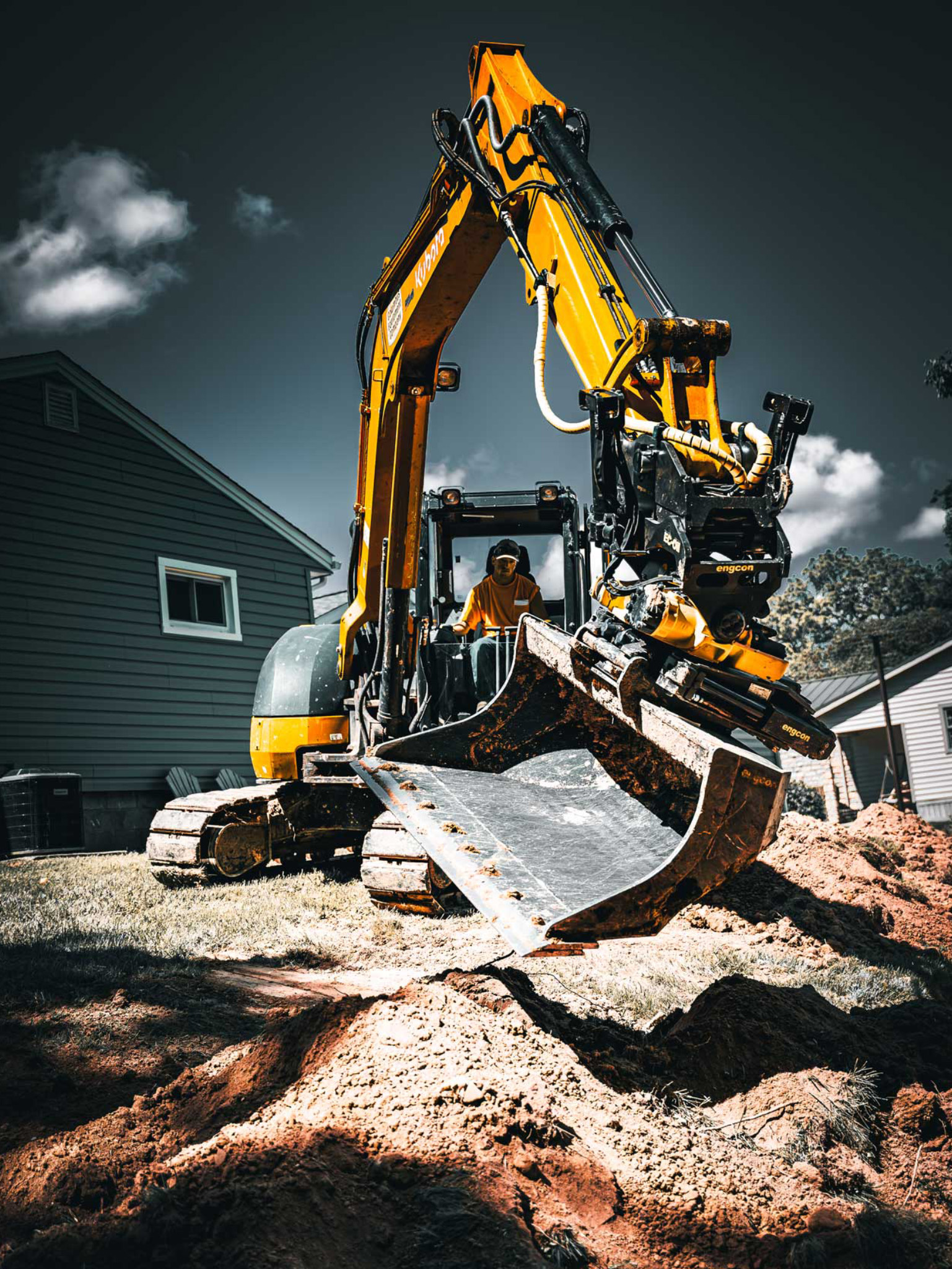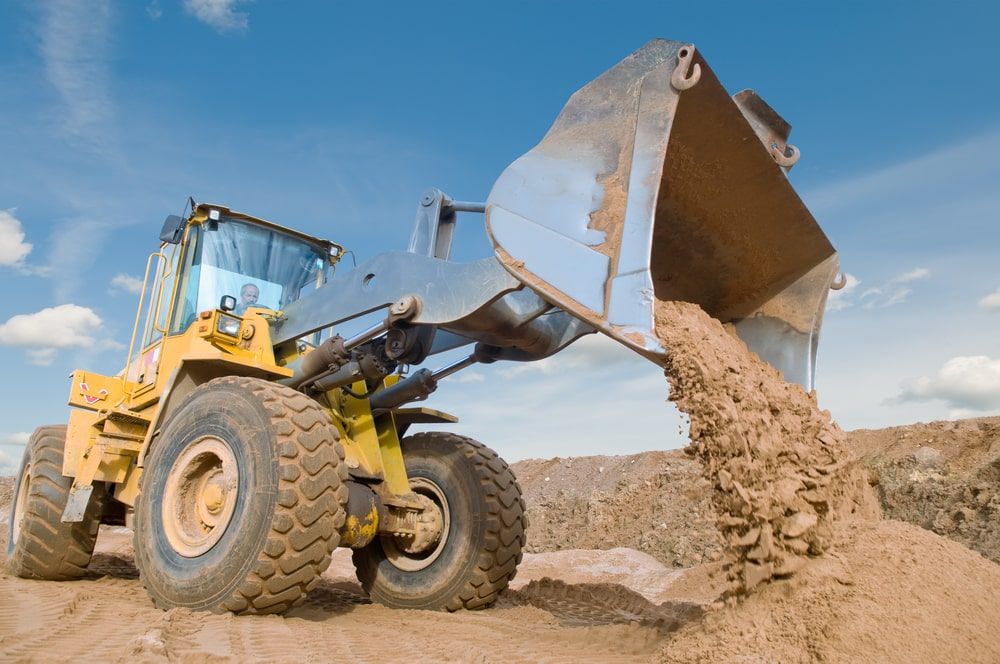Residential Excavating Ohio - Specialized Excavation for Ohio Homes
Residential Excavating Ohio - Specialized Excavation for Ohio Homes
Blog Article
Unveiling the Art of Excavation: Pro Tips for Safe and Productive Digging
In the world of excavation, the proficiency of productive and secure digging is an art type that requires accuracy, expertise, and adherence to well-known techniques. As dirt is transformed and earth is moved, the intricacies of excavation disclose themselves, requiring a keen understanding of tools, dirt structure, safety methods, and ecological factors to consider. The knowledge required to navigate these components efficiently can suggest the difference in between an effective excavation job and a potential calamity. By deciphering the layers of this detailed process, a globe of methods and insights awaits those seeking to raise their excavation skills to brand-new heights.
Relevance of Proper Devices
To make sure the safety and security and performance of any kind of excavation project, making use of the suitable devices is paramount. The right tools not only enhance efficiency yet additionally reduce dangers linked with digging. Excavation jobs differ in scope and intricacy, ranging from little residential landscaping work to massive building tasks. Regardless of the task size, having the appropriate equipment can make a substantial distinction in the end result.
These versatile equipments come in different sizes to fit different task demands. Mini excavators are ideal for smaller sized tasks, while bigger excavators tackle much more comprehensive projects efficiently.
In addition to excavators, other essential tools includes dump bulldozers, vehicles, and trenchers. Unload trucks are essential for eliminating and moving excavated products, while plates are used for excavating deep and narrow trenches. Excavators excel in jobs that require pushing big quantities of dirt or particles. By purchasing the ideal equipment, excavation tasks can be finished safely, promptly, and with precision.
Comprehending Soil Structure
An extensive grasp of soil composition is fundamental for carrying out excavation tasks with accuracy and safety and security. Understanding the different kinds of soil is important as it straight affects excavation techniques, devices selection, and overall project efficiency.
Silt bits are smaller than sand yet larger than clay, using modest water drainage and cohesion. Organic matter, such as rotting plant material, affects dirt fertility and stability.
Before starting excavation, carrying out soil tests to identify its structure and qualities is vital. This details aids in choosing the suitable tools, carrying out precaution, and establishing excavation strategies customized to the particular dirt conditions - lancaster trenching. By recognizing dirt composition, excavation specialists can enhance task outcomes while guaranteeing security and adherence to finest techniques
Safety And Security Measures and Methods
Recognizing soil structure is the cornerstone whereupon precaution and protocols for excavation tasks are constructed, guaranteeing the health of employees and the success of the venture. When it comes to safety during excavation, there are several key procedures that have to be implemented to reduce threats and avoid crashes.
Most importantly, prior to any kind of digging begins, a thorough assessment of the website need to be conducted to identify any type of prospective risks such as underground utilities, unsteady dirt problems, or close-by structures that can posture a danger. It is crucial to have a skilled person oversee the excavation procedure to ensure that all security methods are adhered to purely.
Moreover, all employees entailed in the excavation has to be effectively trained in risk-free digging methods and the proper operation of tools. By sticking to these security procedures and procedures, excavation projects can be completed successfully and without case.
Efficient Excavation Planning
When beginning on an excavation project, meticulous preparation is necessary to ensure performance, security, and successful end results. Efficient excavation planning entails numerous vital actions that are important for the smooth execution of the task. The very first step is to perform a comprehensive site analysis to determine any kind of prospective Recommended Site hazards, such as below ground utilities or unstable soil problems. This information is crucial for creating an in-depth excavation strategy that includes safety actions and take the chance of reduction methods.
When the website assessment is full, the next action is to create a clear timeline and schedule for the excavation activities. This includes determining the sequence of jobs, devices demands, and workforce allotment. Correct scheduling assists prevent hold-ups and makes sure that the job remains on track.

In addition, interaction amongst all employee is paramount throughout the preparation phase. Clear directives, normal updates, and effective sychronisation are essential for a successful excavation task. By spending effort and time in precise preparation, excavation groups can dramatically boost productivity, reduce risks, and achieve content successful outcomes.

Taking Care Of Ecological Considerations
With raising focus on environmental sustainability in construction techniques, handling ecological factors to consider has actually become a vital aspect of excavation tasks. Excavation activities have the possible to impact the surrounding setting with dirt disintegration, sediment overflow, habitat interruption, and contamination of water sources. To alleviate these risks, it is necessary to apply finest techniques that prioritize environmental management.

Furthermore, proper waste management is essential to stop soil and water contamination. Executing procedures for the disposal of dangerous materials, recycling of waste materials, and minimizing making use of harmful chemicals can considerably decrease the environmental effect of excavation projects. By integrating these techniques right into excavation planning and execution, construction companies can ensure that their tasks are not just risk-free and efficient but additionally eco accountable.
Conclusion
Finally, mastering the art of excavation requires a thorough understanding of correct devices, soil make-up, precaution, and effective planning. By complying with these guidelines and considering ecological variables, excavations can be carried out safely and successfully. It is vital to prioritize safety and efficiency in every excavating job to ensure effective outcomes.
As dirt is turned and planet is moved, the ins and outs of excavation reveal themselves, requiring a keen understanding of devices, soil structure, safety and security methods, and environmental factors to consider.To guarantee the safety and security and efficiency of any kind of excavation project, using the ideal devices is paramount.A detailed grasp of soil make-up is fundamental for see carrying out excavation projects with accuracy and safety and security. Comprehending the various kinds of soil is vital as it directly impacts excavation methods, devices option, and overall job performance. By understanding soil structure, excavation experts can boost project outcomes while making sure safety and security and adherence to best methods.
Report this page